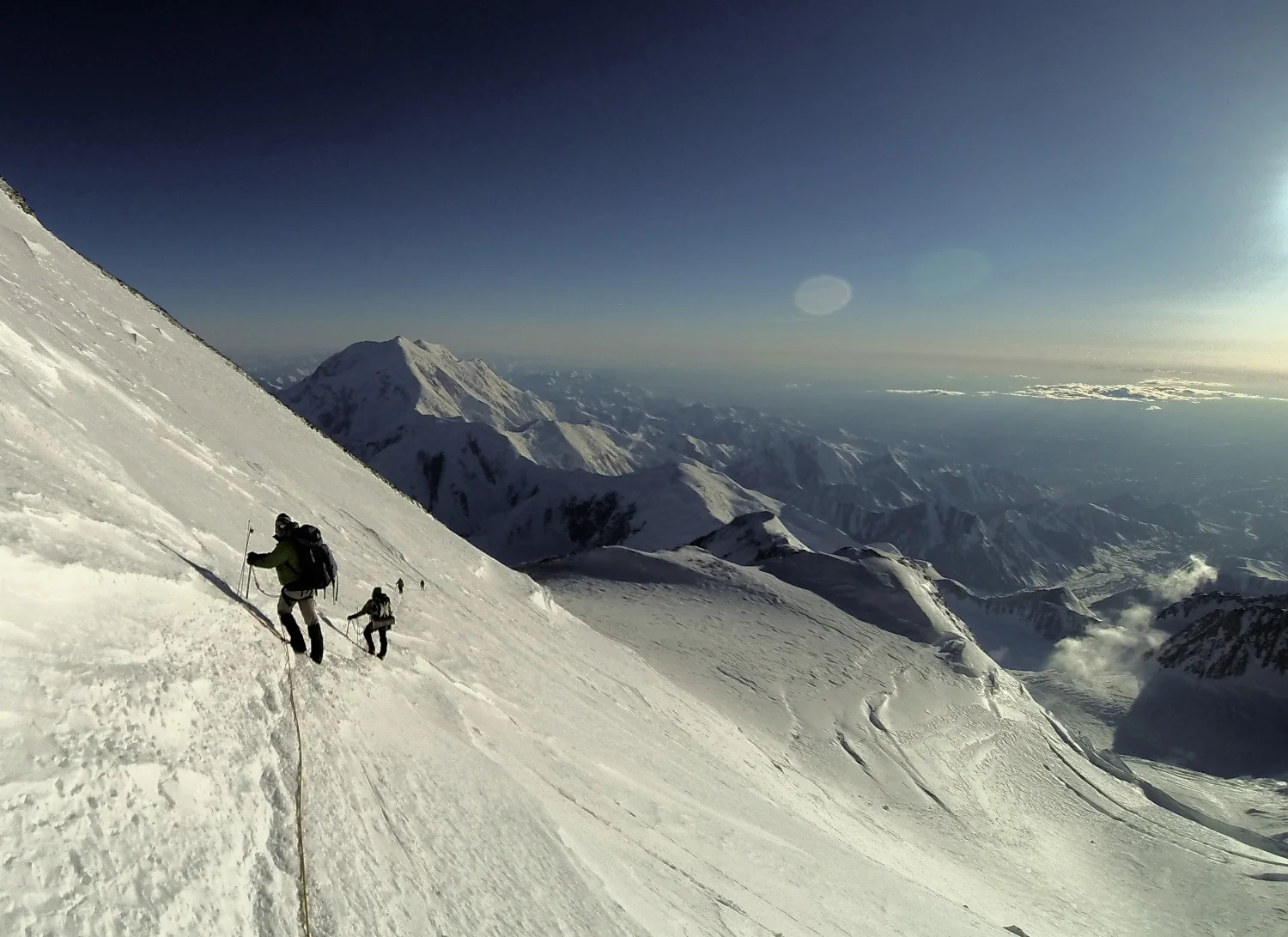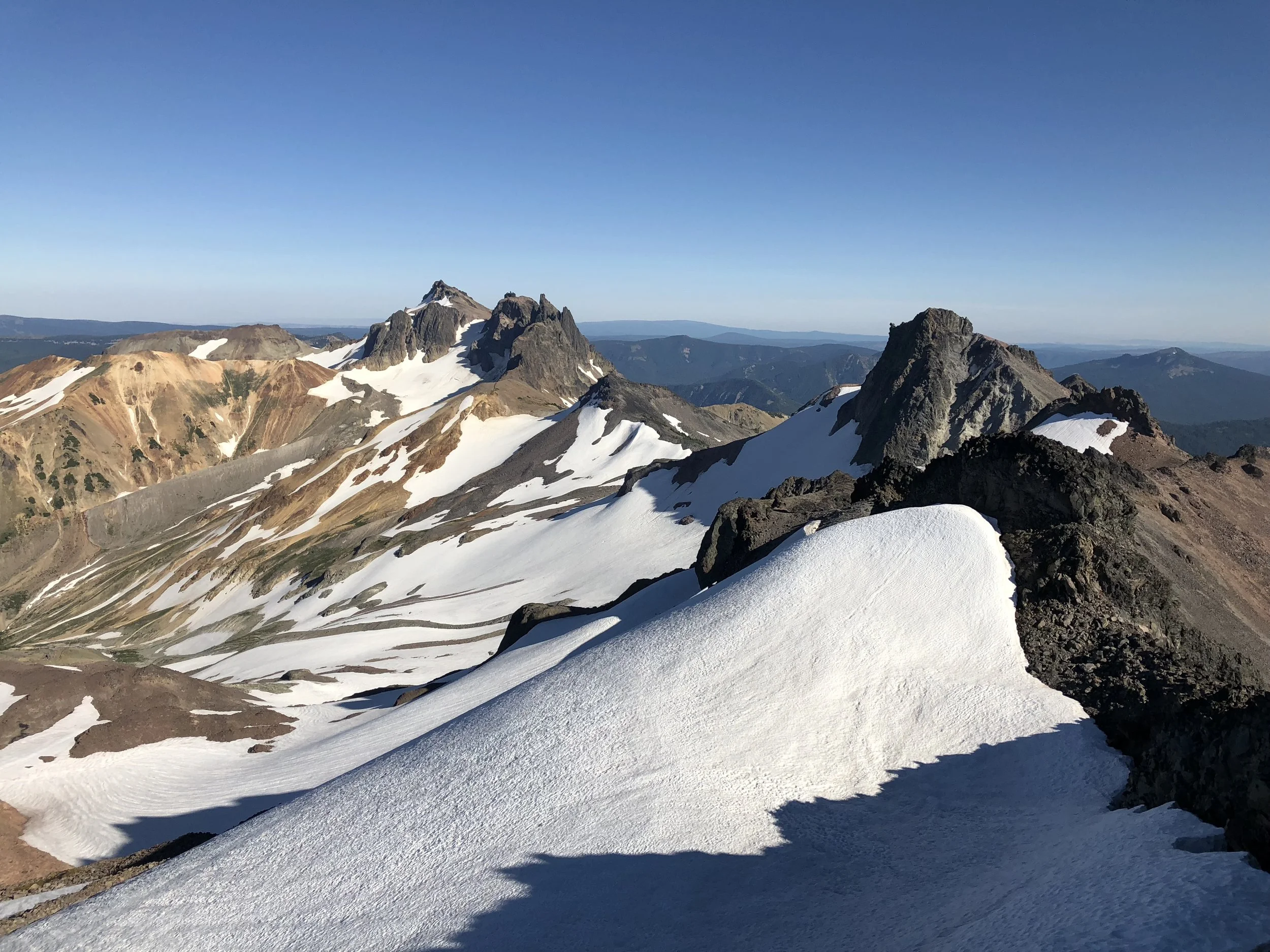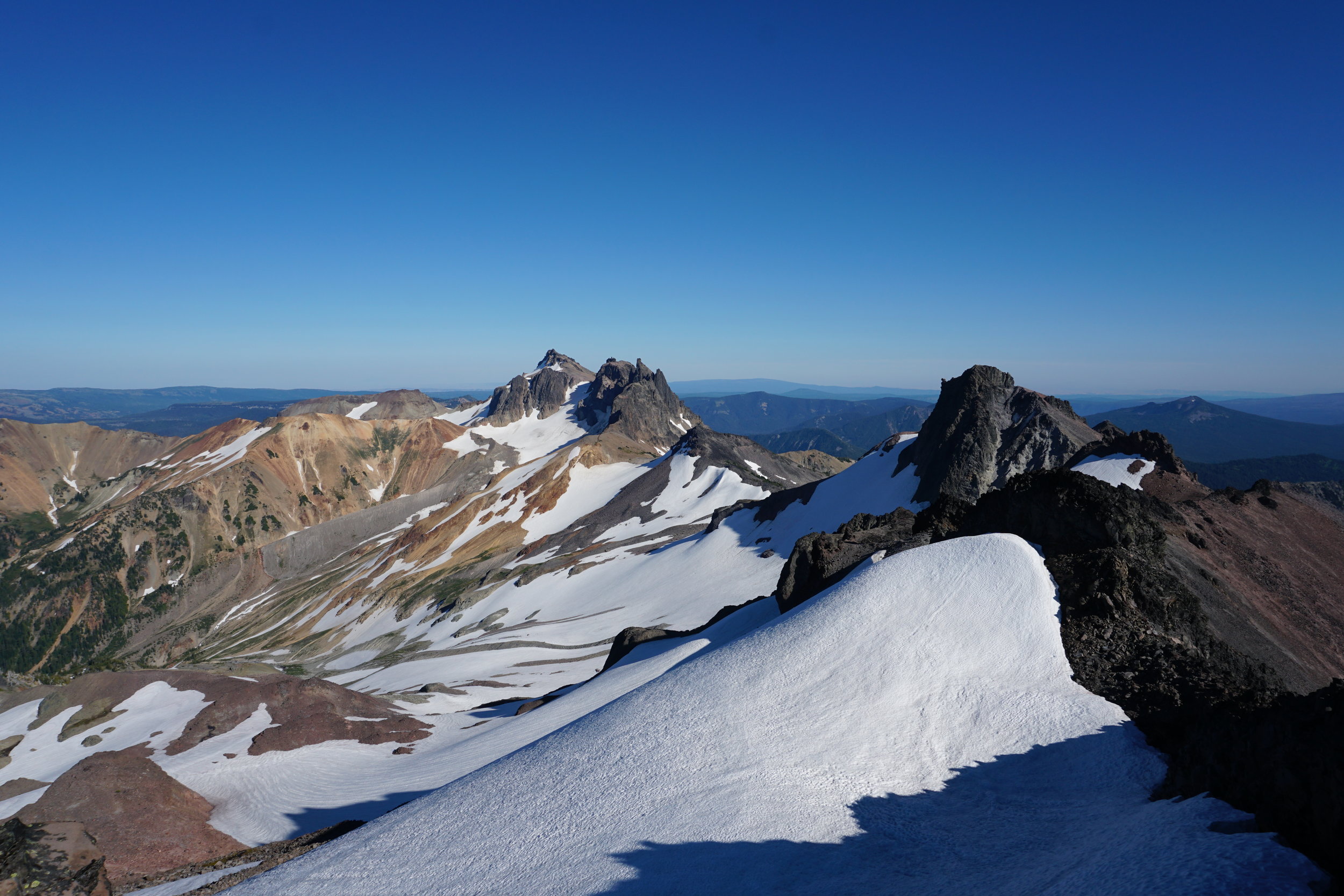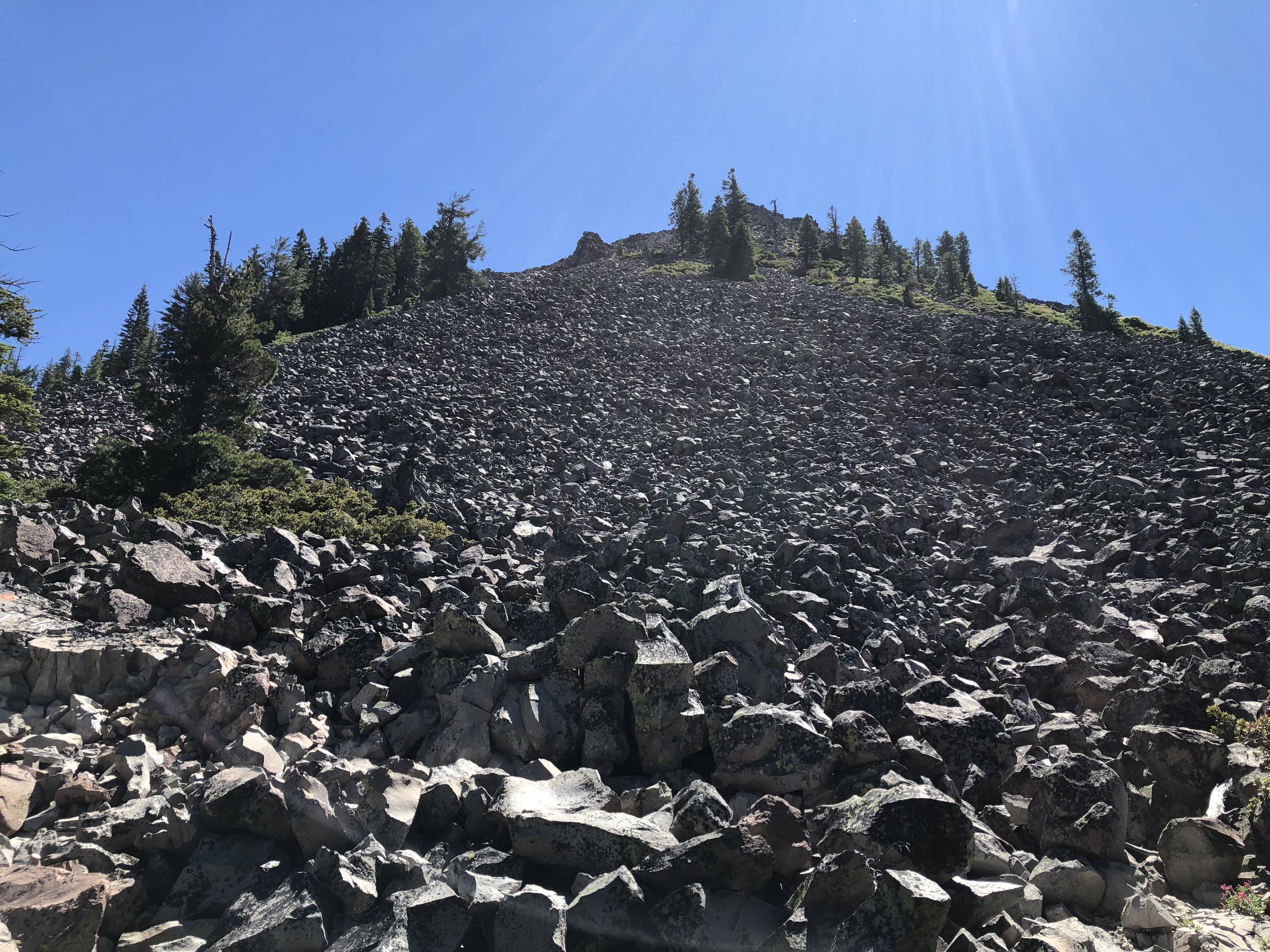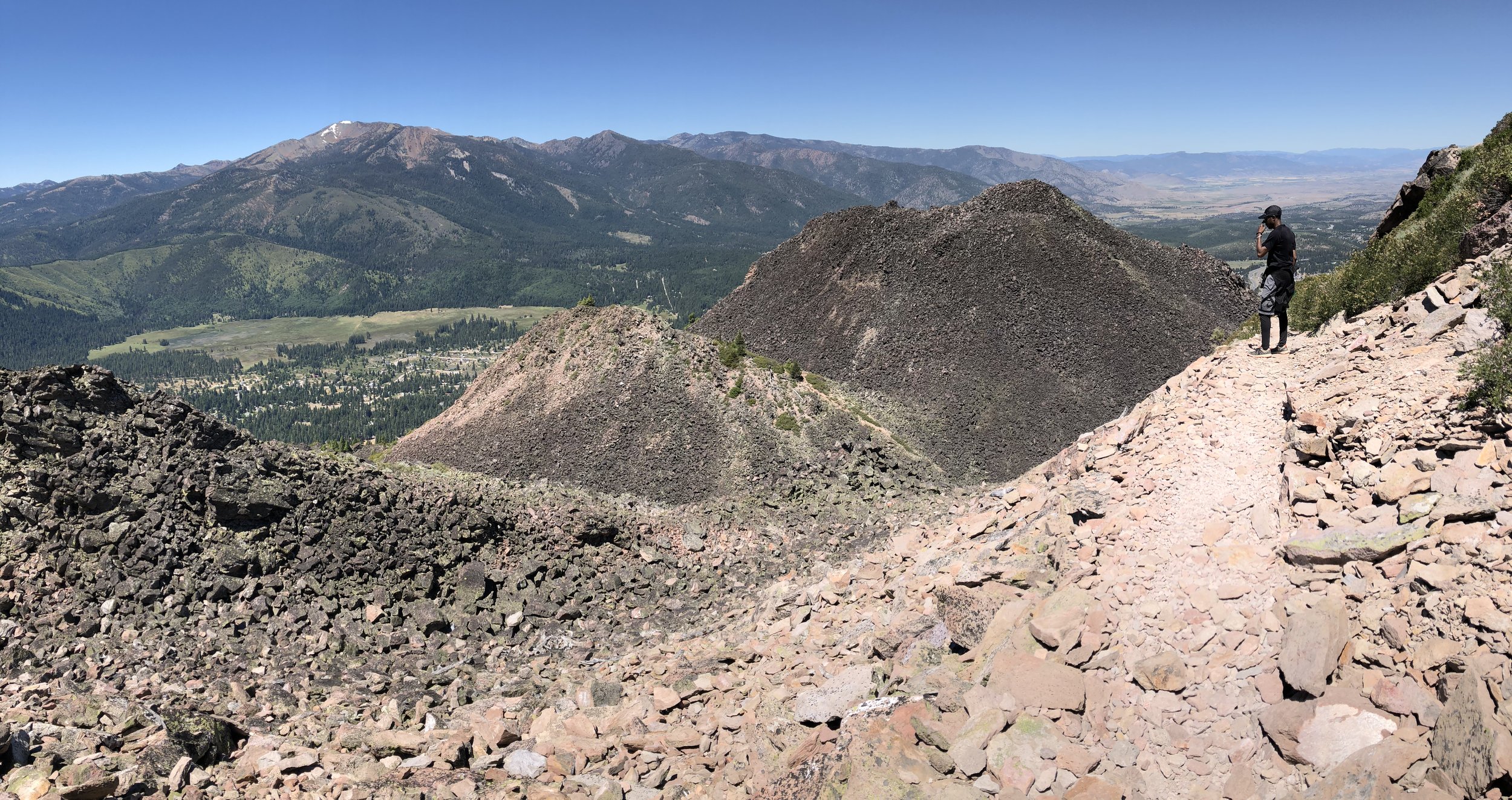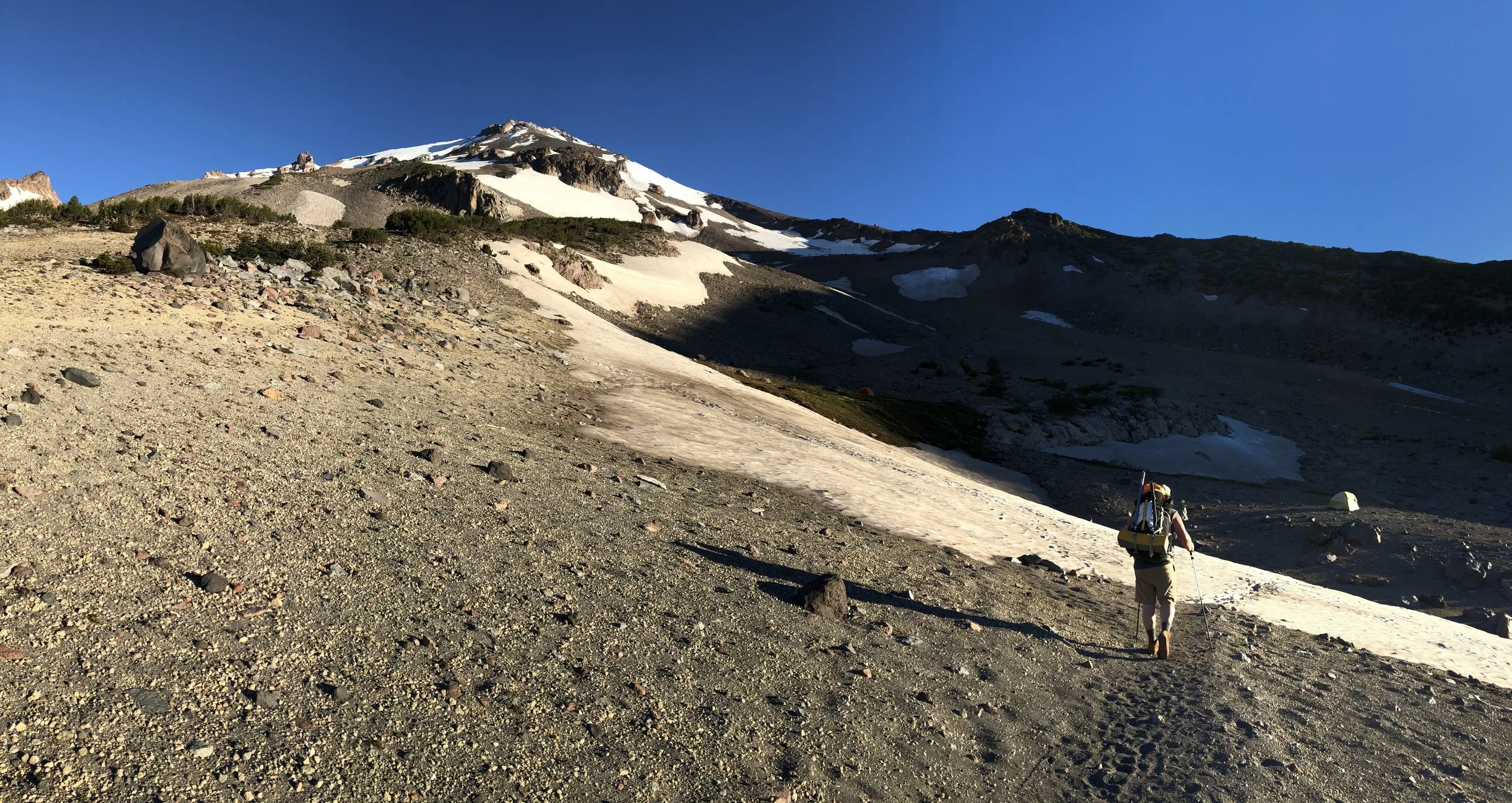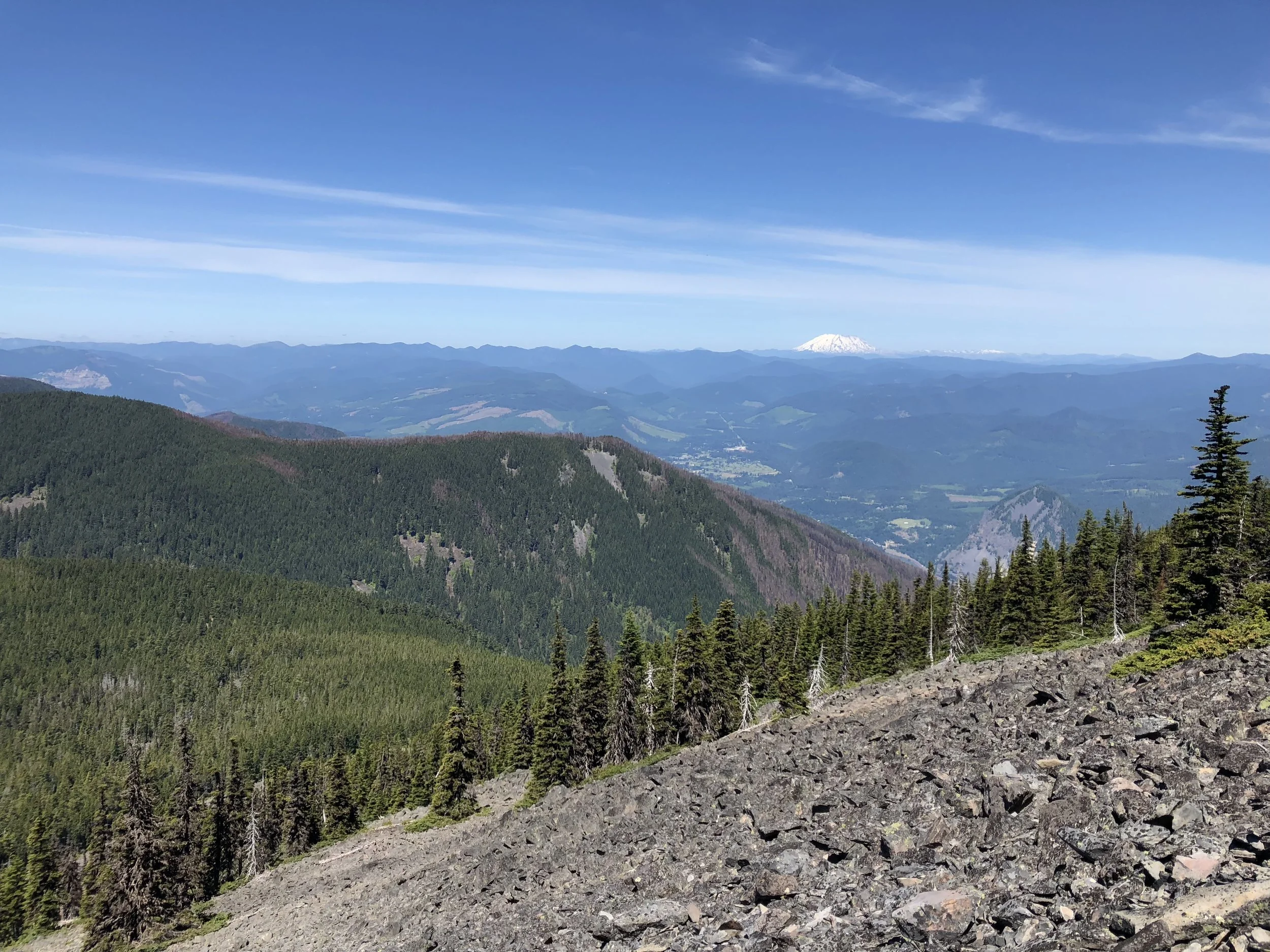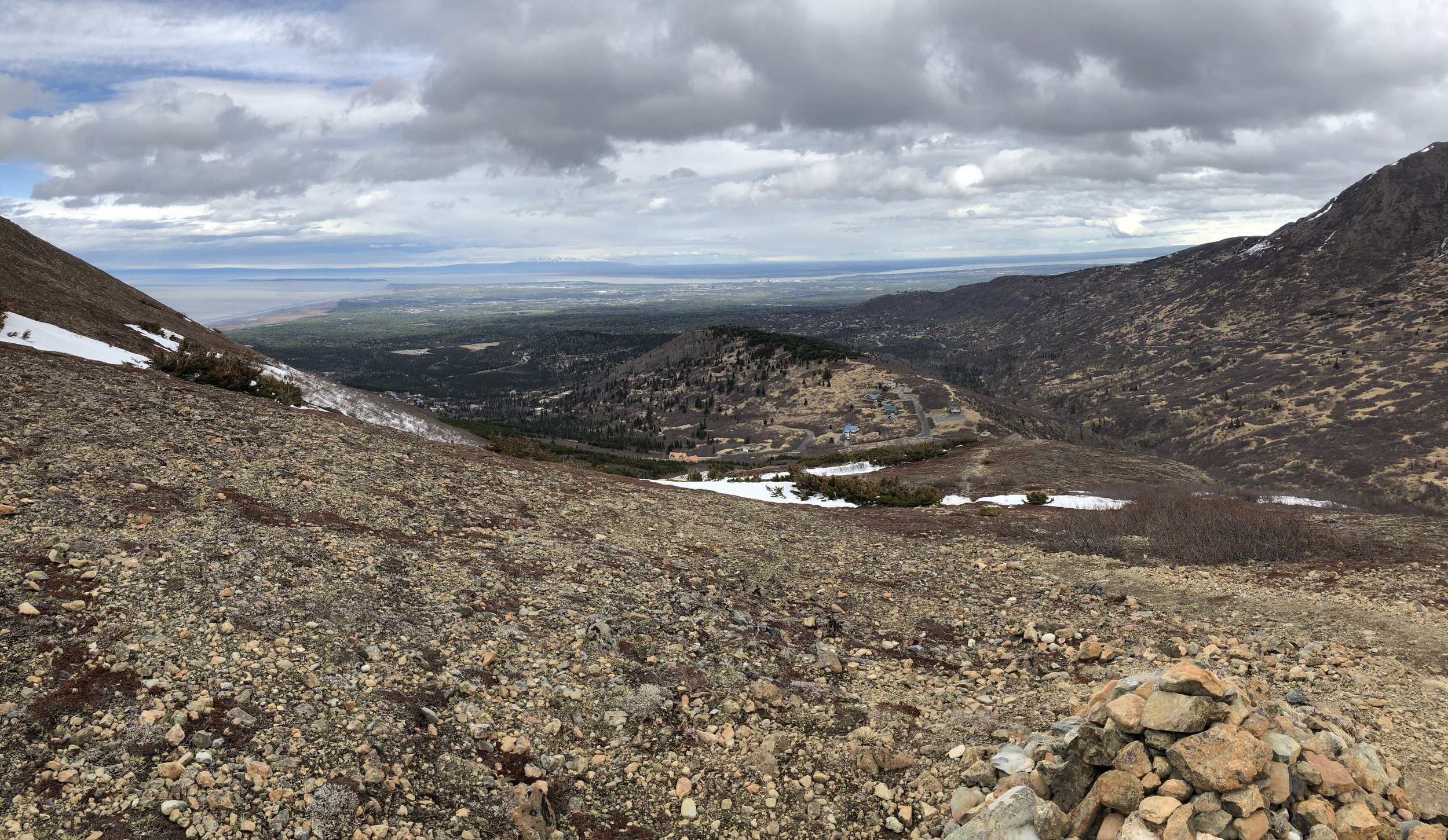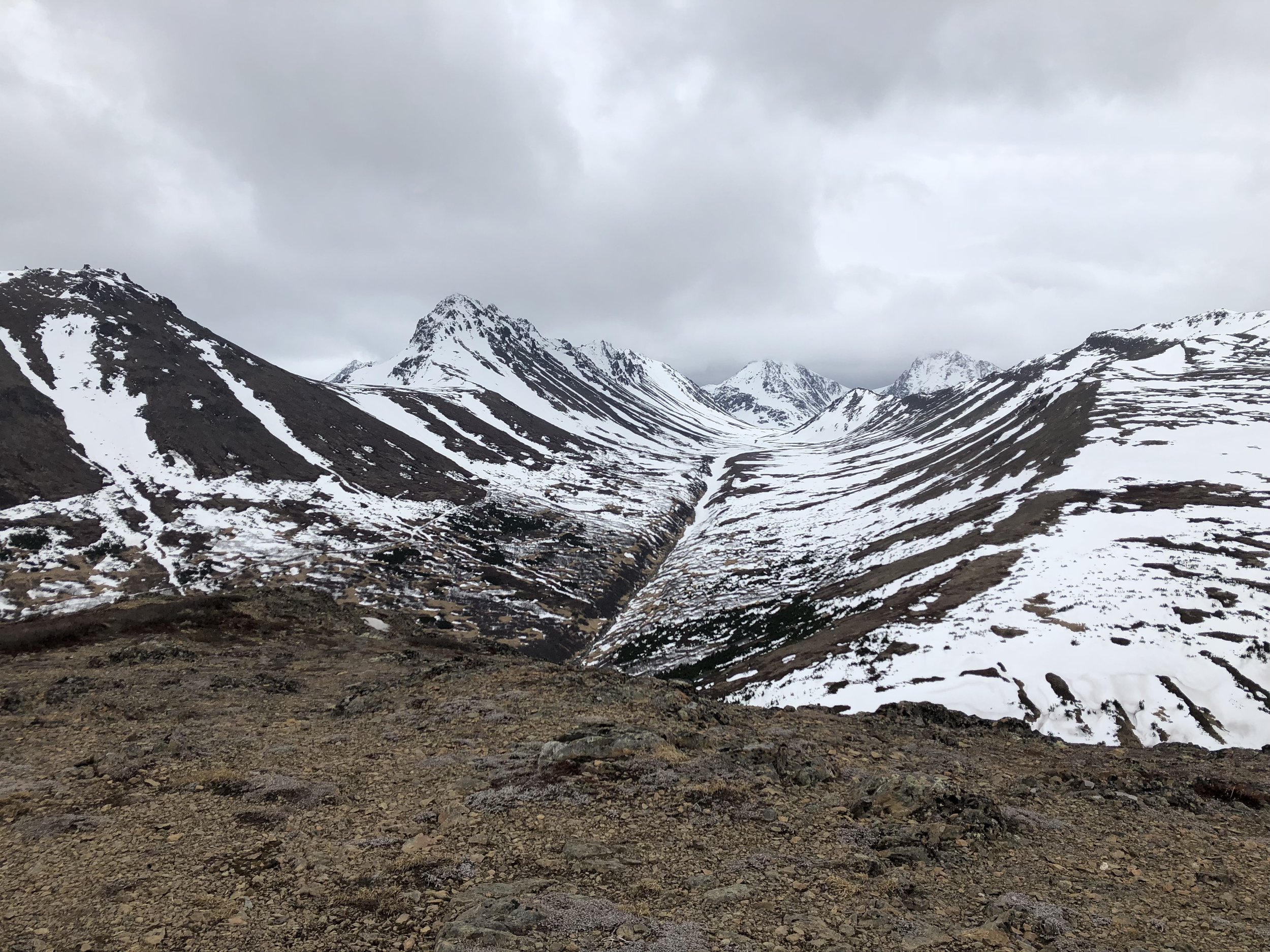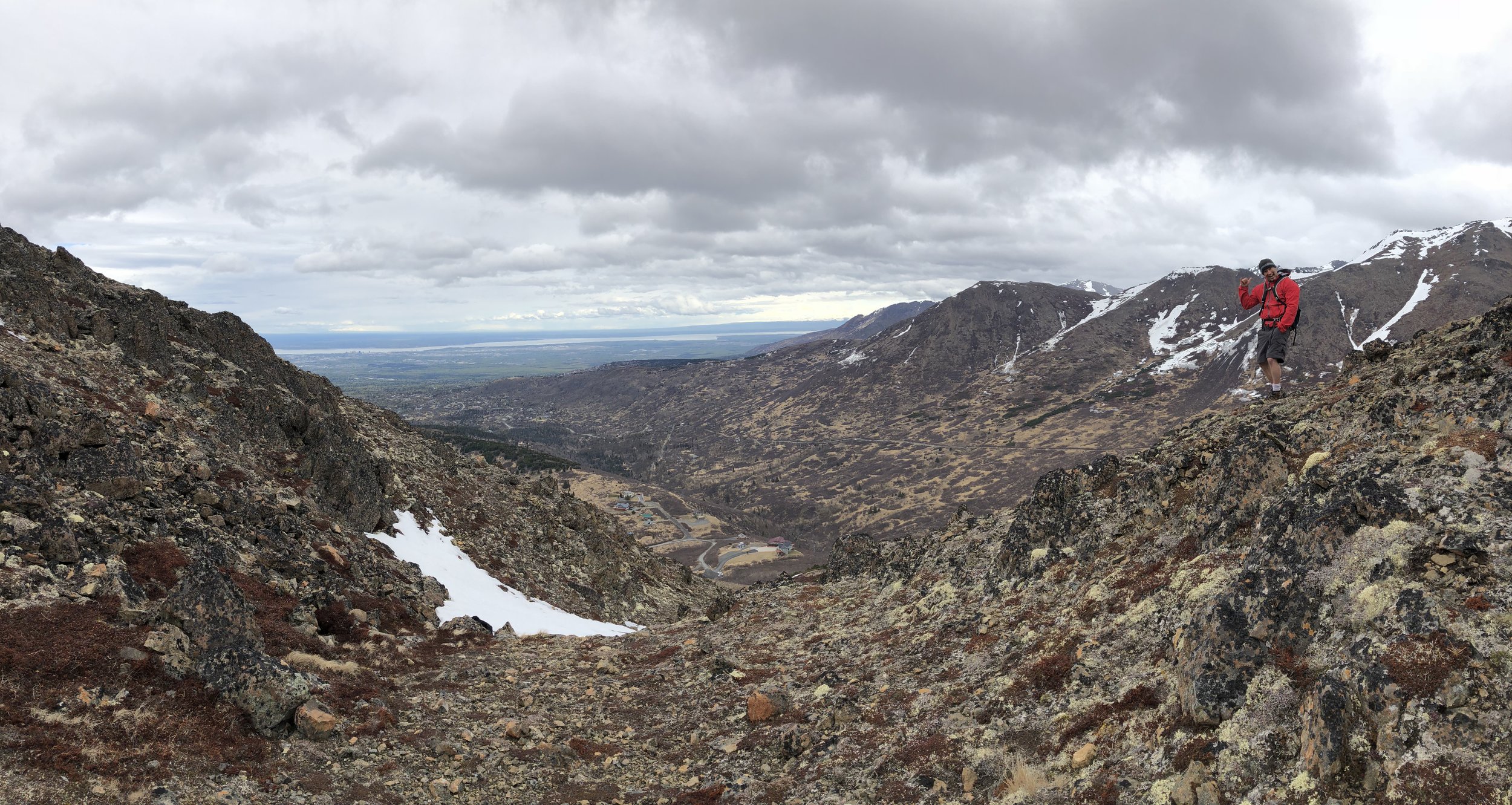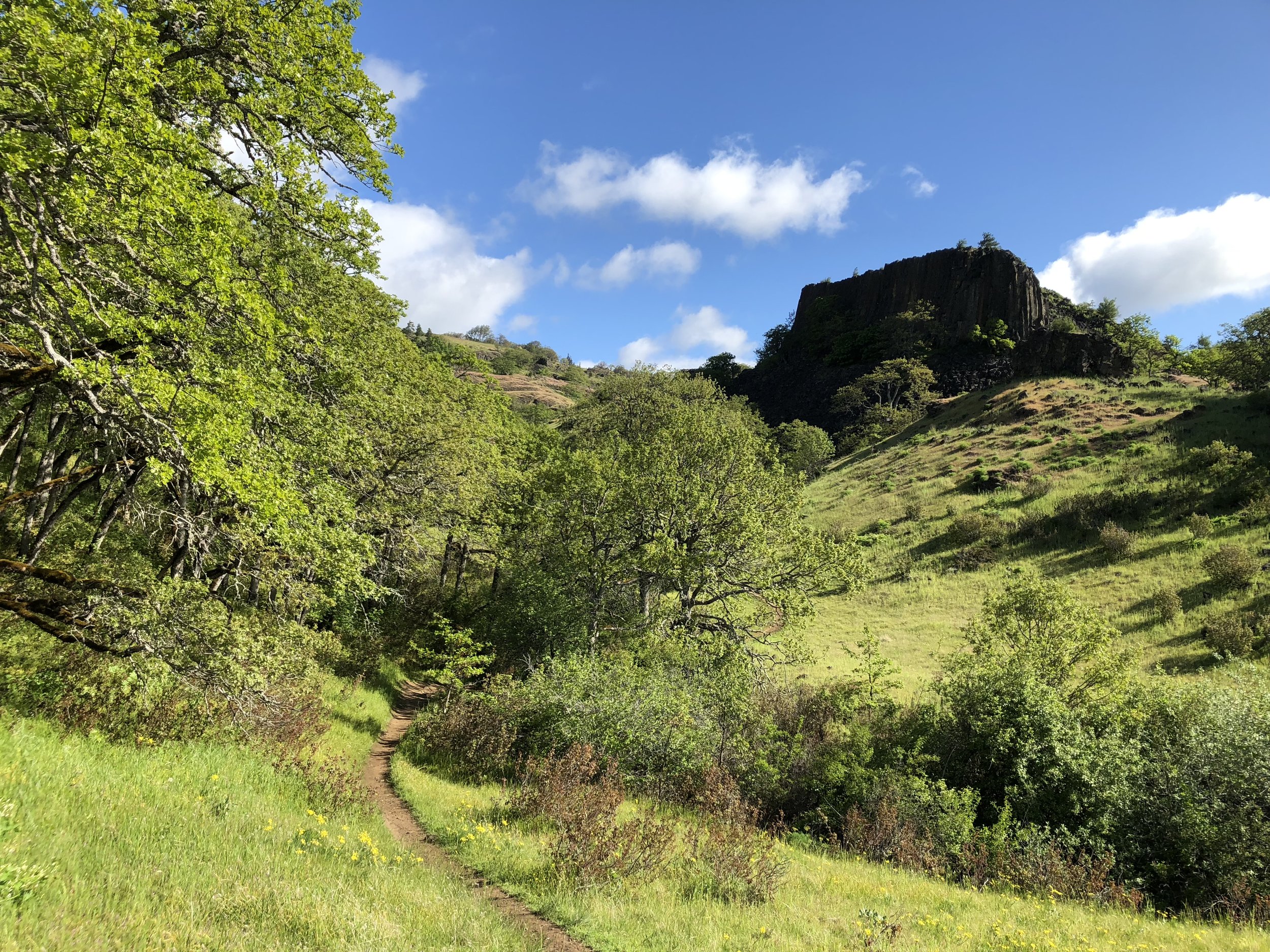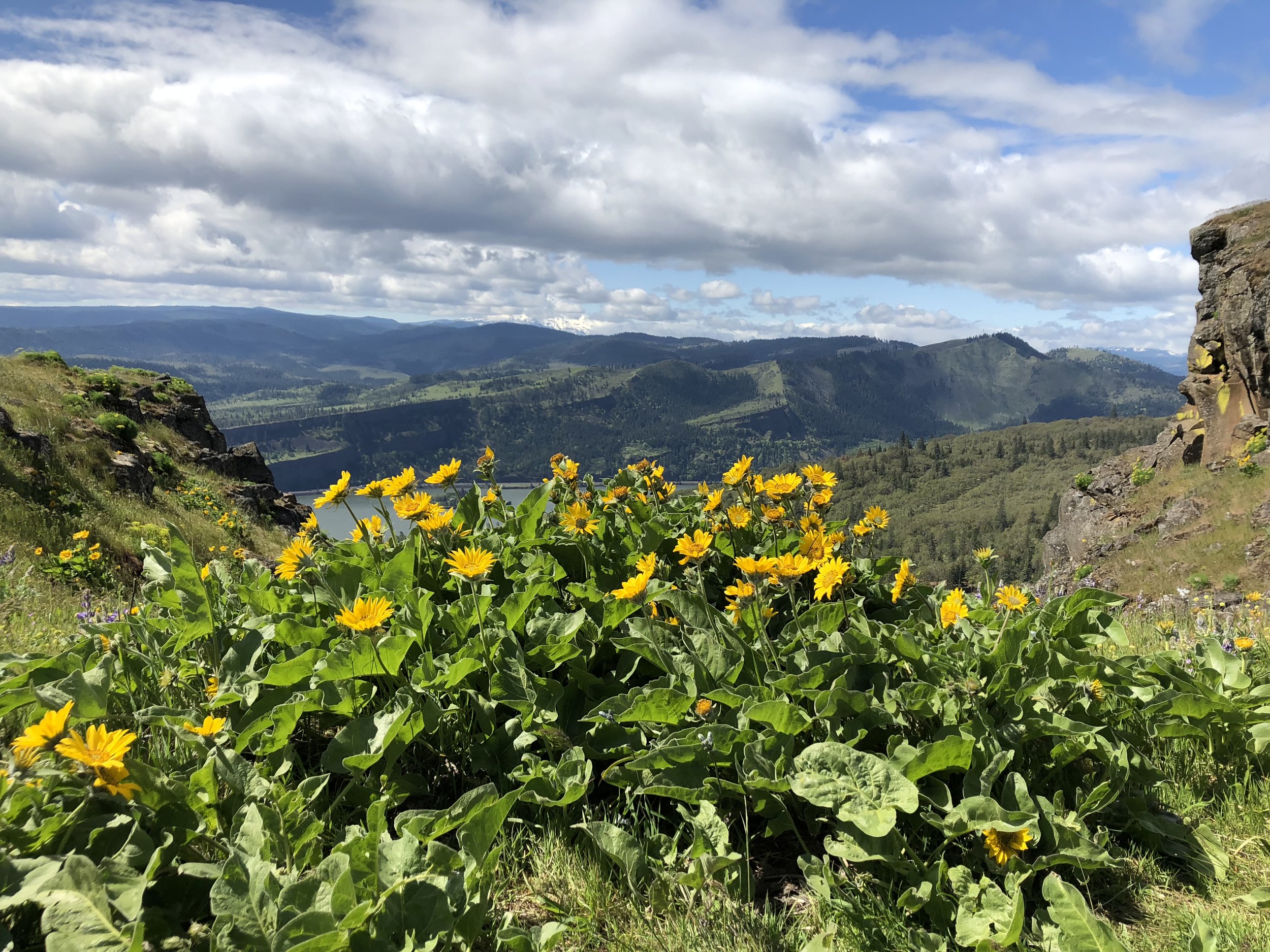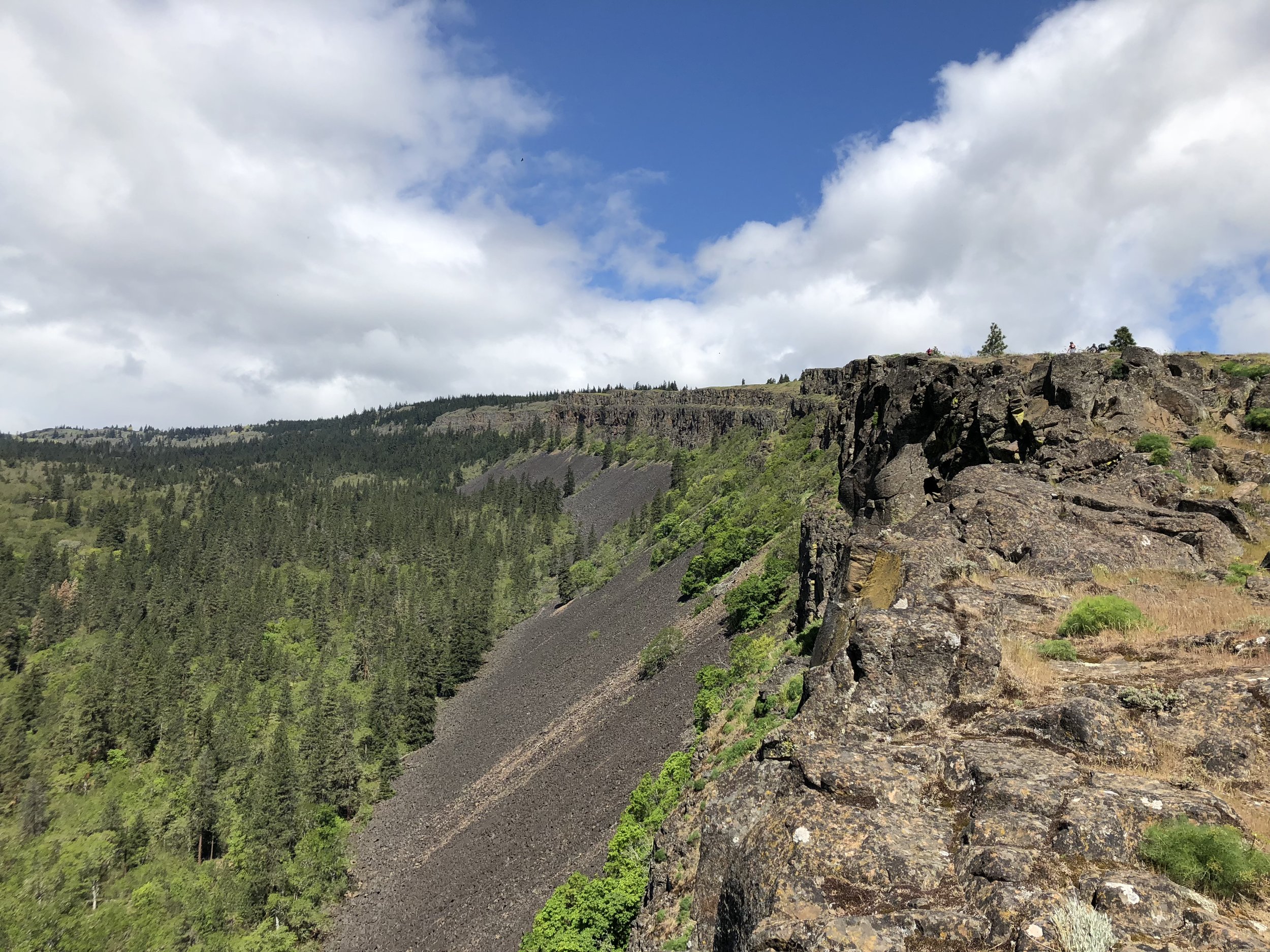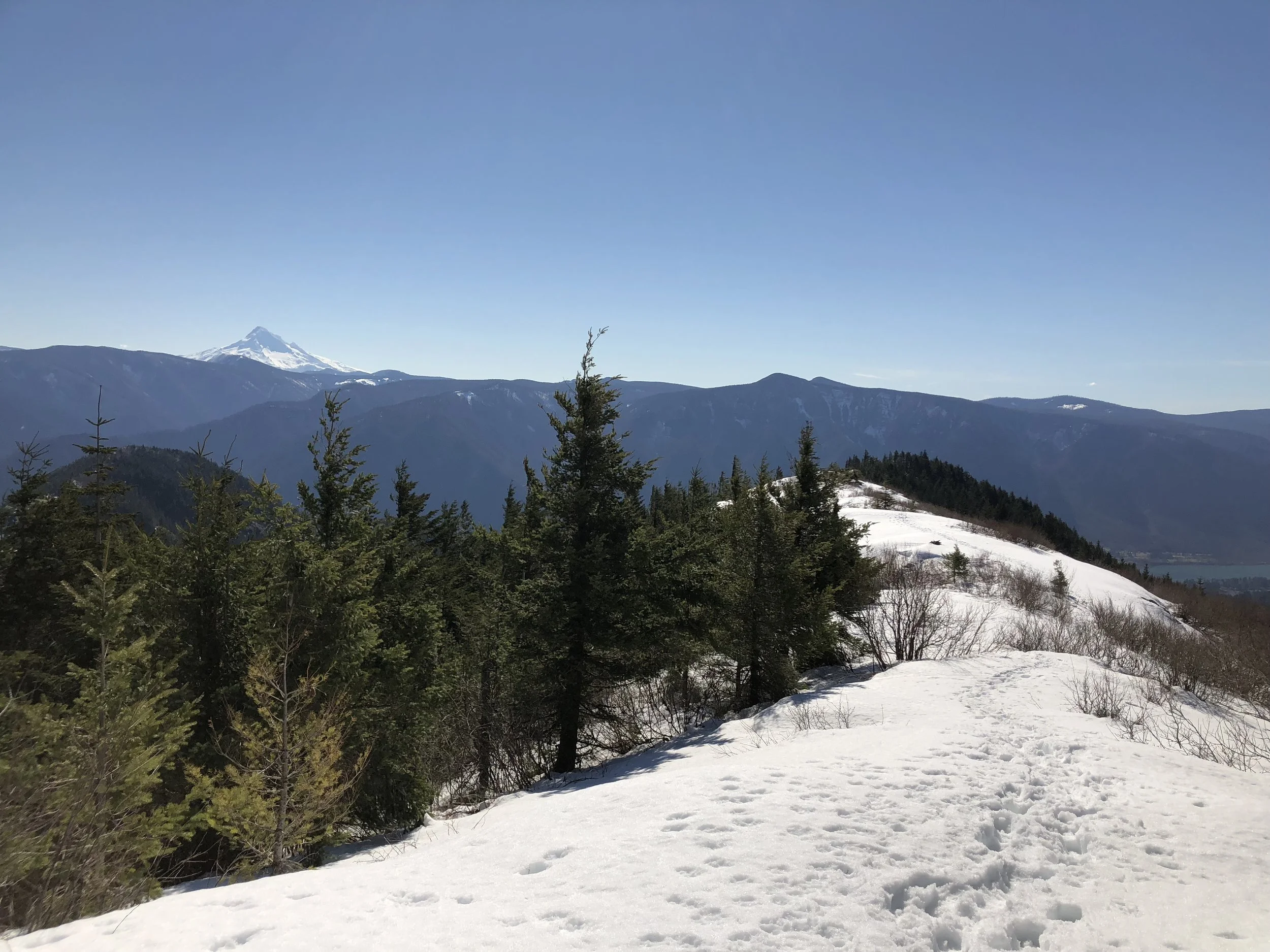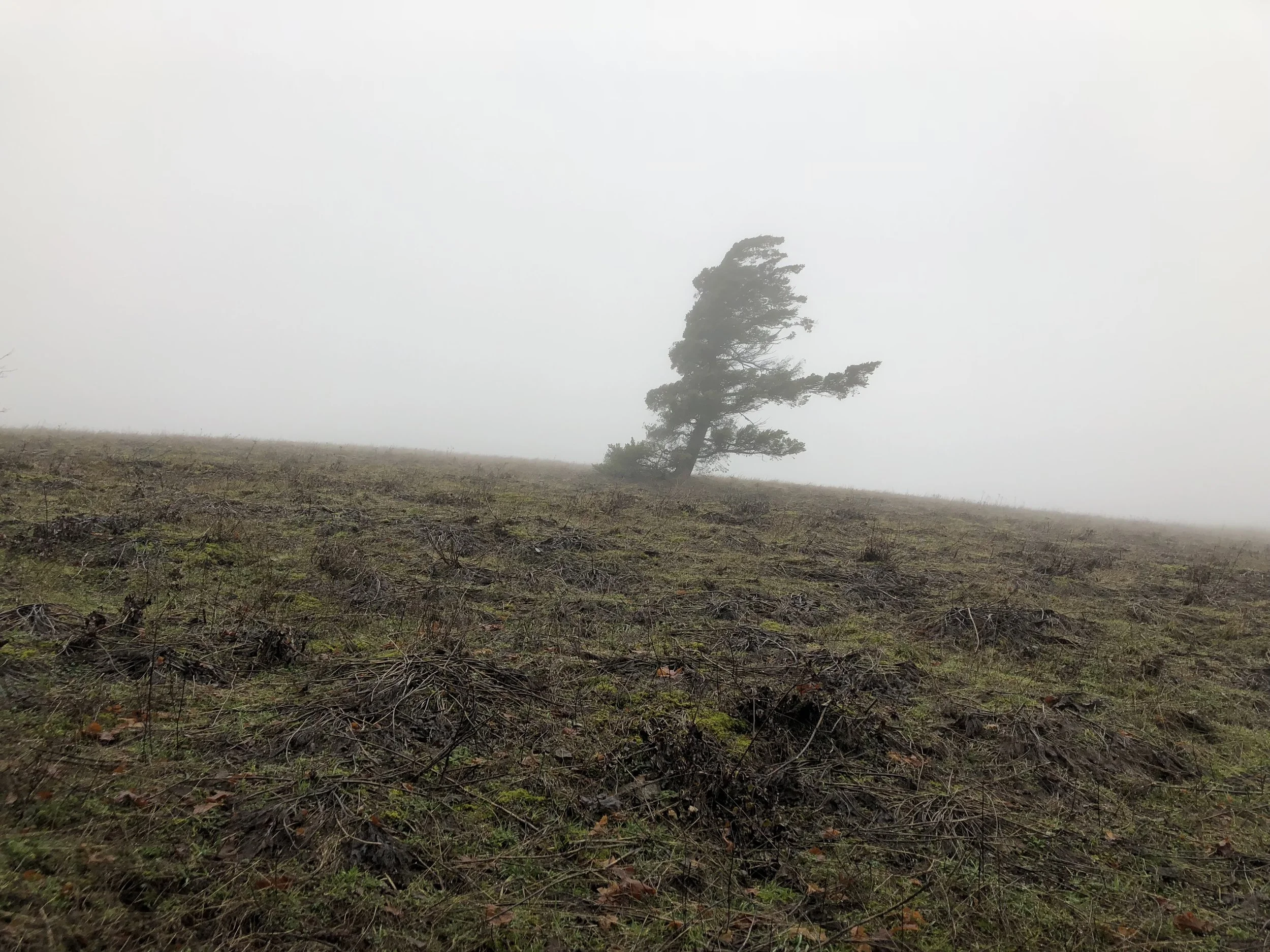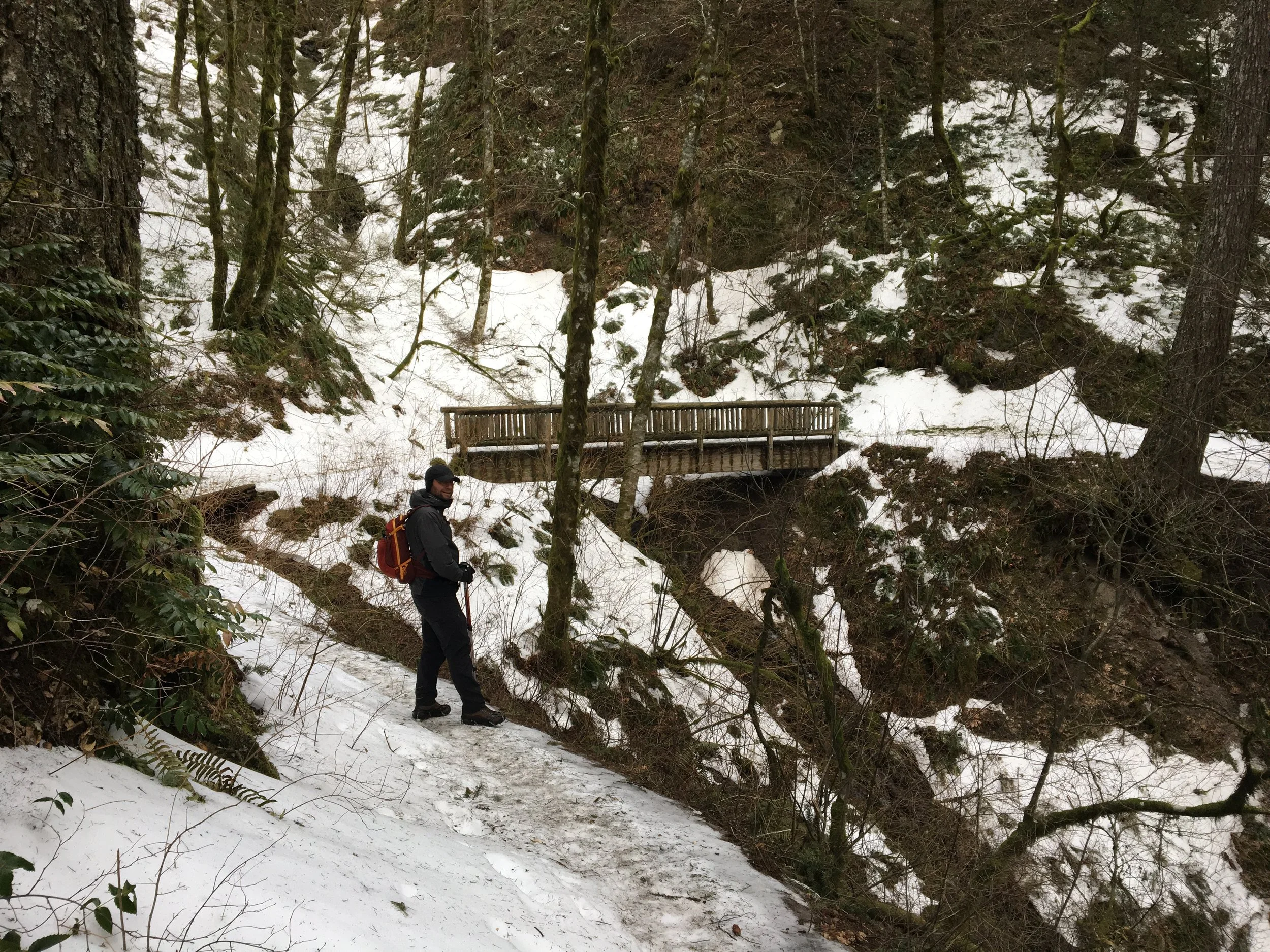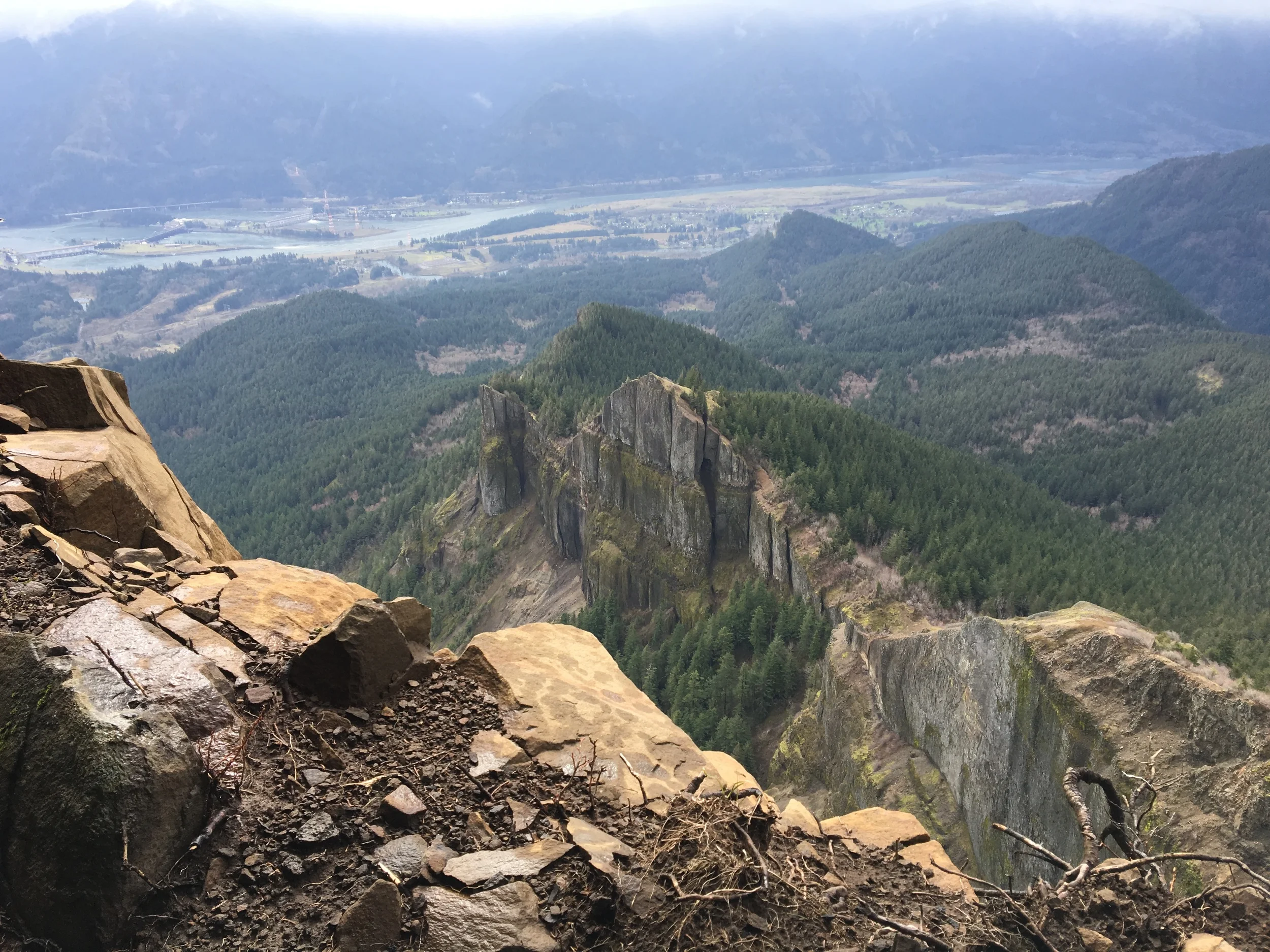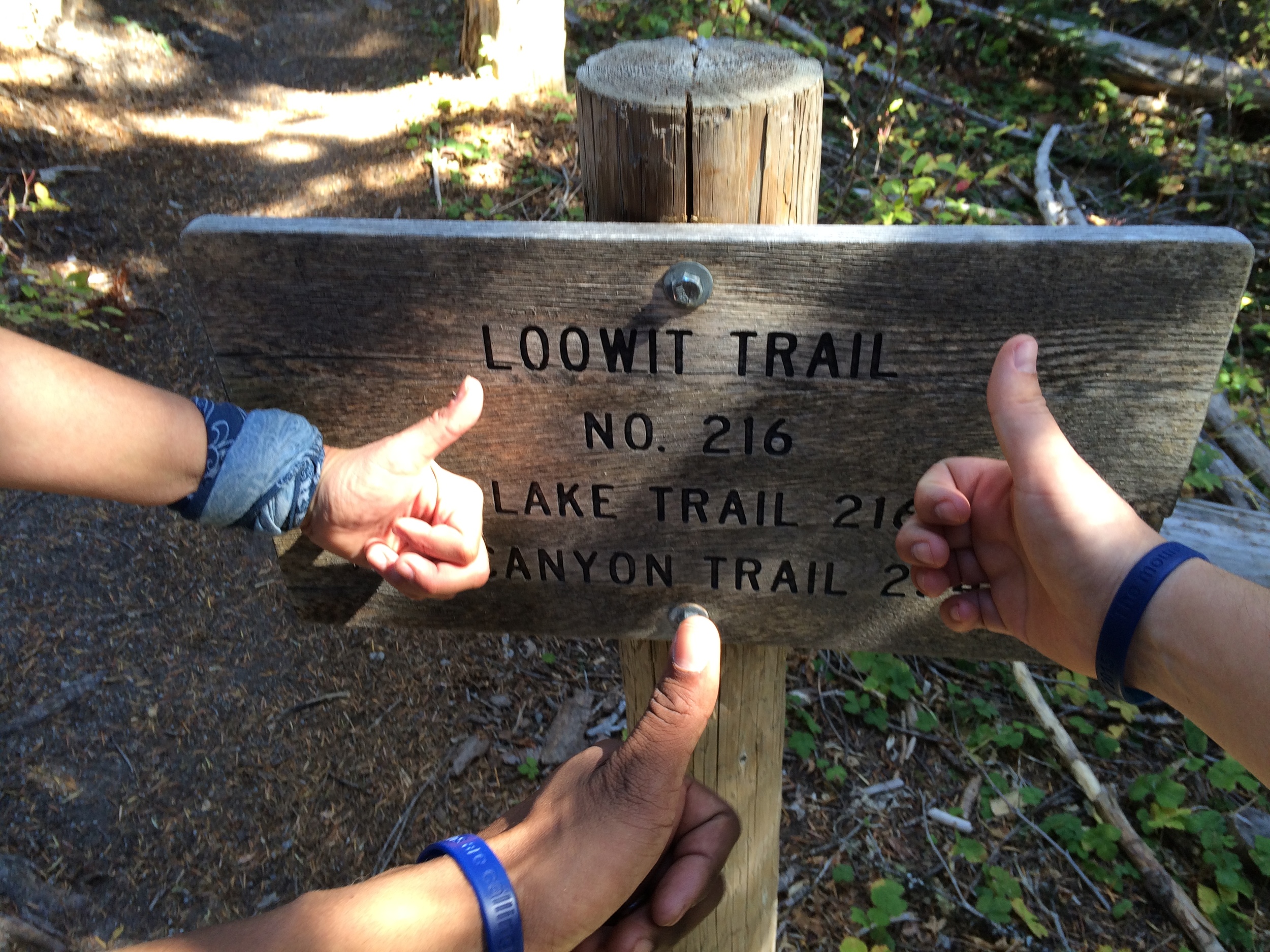There are shockingly only three national parks in Washington state – Olympic, Mount Rainier, and North Cascades. The Goat Rocks Wilderness could easily be the fourth. Straddling the Cascades between Mount Rainier and Mount Adams, the Goat Rocks and its 108,000 protected acres are a geologic wonder.
The Goat Rocks with Old Snowy on the far left.
On July 20, 2018, our team traveled up from Portland in two cars to hike into the wilderness and camp for one night near Old Snowy Mountain’s summit. At 7,900 feet, Old Snowy is the fifth highest peak in the wilderness and the most accessible to backpackers.
Click here and click here to view more photos from the trip.
We drove north on I-5 with light traffic under an overcast sky. After stopping for gas at the excellent Stop & Save Food Mart in Longview and again for provisions in Morton, we reached the trailhead around noon. The clouds were gone by the time we started hiking.
Bridge over Goat Creek.
The first mile and a half goes through a forest and gradually descends before reaching a bridge over Goat Creek. Other than a few mosquitoes, we encountered no problems and steadily made our way into the wilderness. Through the trees we could see Mount Adams to the south.
Mount Adams.
After crossing Goat Creek, the trail begins gaining elevation as it switchbacks up to the treeline. We kept up a consistent pace, taking occasional breaks for water and snacks. By mid-afternoon, we emerged from the trees and joined the Pacific Crest Trail at Snowgrass Flats. The Goat Rocks with Old Snowy, Ives Peak, Gilbert Peak, and others towered over us to the north. In the distance to the south Mount Adams was joined by Mount St. Helens.
Goat Rocks and wildflowers.
The wildflower show was well past its peak, but paintbrush clusters, bear grass, and other colorful patches could still be found. As the trail continued upward, we crossed through snowfields and talus slopes. And then we caught Mount Rainier staring at us from northwest, completing the three-volcano trifecta with Adams and MSH.
Throughout the afternoon we weren’t certain our campsite would be available. But as we neared Old Snowy’s base, we could see our alpine bivy remained vacant awaiting our arrival.
Crossing a snowfield with Mount St. Helens in the background.
The final push to the campsite required crossing a long snowfield before pushing up switchbacks on a talus slope. We all dug deep with our heavy packs and one at a time arrived at camp. Above us, Old Snowy’s summit invited further exploration. Looking towards the horizon, the three volcanoes and countless other Cascade peaks provided our evening entertainment.
Nearing high camp with Mount Rainier in the distance.
After a short rest, five from the group climbed up Old Snowy. The scramble requires caution, but is not overly technical. Upon reaching the top, we could see the other Goat Rocks summits and McCall Glacier. We took photos and enjoyed the moment before carefully descending back to our bivy site.
View from Old Snowy's summit.
Our camp site.
For the next few hours, we watched Mother Nature put on a show culminating with a tear-inducing sunset with Lisa Gerrard and Jeff Buckley providing the soundtrack. The celestial encore included several planets, a Milky Way carpet, and constellations along with a half moon. Since conditions were great, several in the group slept under the stars without using tents.
Sunset behind Johnson Peak with Mount Rainier.
In the morning, we leisurely packed up camp and retraced our steps from the day before. Below camp near the Old Snowy/PCT junction, we saw our first and only mountain goat. After seeing us, it rapidly crossed through a snowfield and up a rocky slope.
Early morning over Cascadia with Mount Adams on the left, Mount St. Helens in the middle, and Mount Rainier on the right.
Crossing a snowfield with Mount Rainier in the distance.
The seven miles back to the trailhead were fueled by light packs and thoughts about a hot meal. At times a slog, we made it back safely around 1:30pm. We then headed to the Tall Timber Restaurant for the finest fried food in Randle, WA.
Paintbrush for the win.
Key takeaways:
- Goat Rocks needs to become a standing annual trip for the Pentaquest. There's nothing quite like it this close to Portland and Seattle.
- Always bring a tent footprint to put beneath a sleeping pad when “cowboy camping.” My pad was covered in dirt from sleeping under the stars.
- Mosquito repellent is essential on all trips. It would have helped during the first few miles in the woods.
- Artisanal junk food is the best! I found some fruit loops-infused rice krispie treats and wild huckleberry bark at Market of Choice that brought joy to the group.
- Great people backpacking in phenomenal conditions will always lead to a memorable trip.

